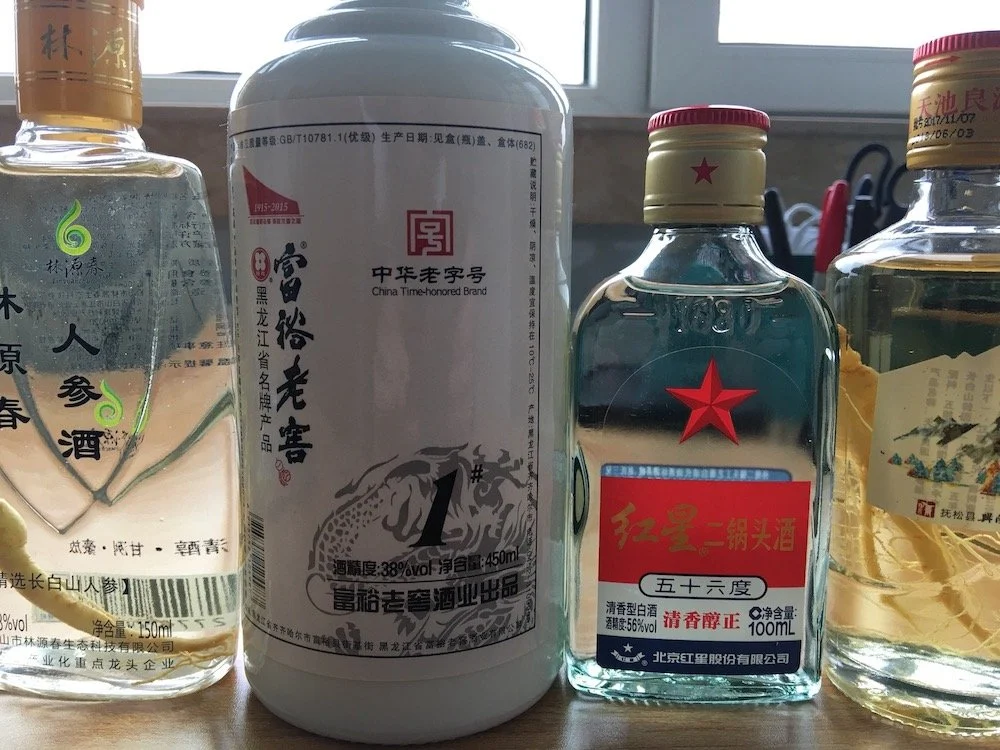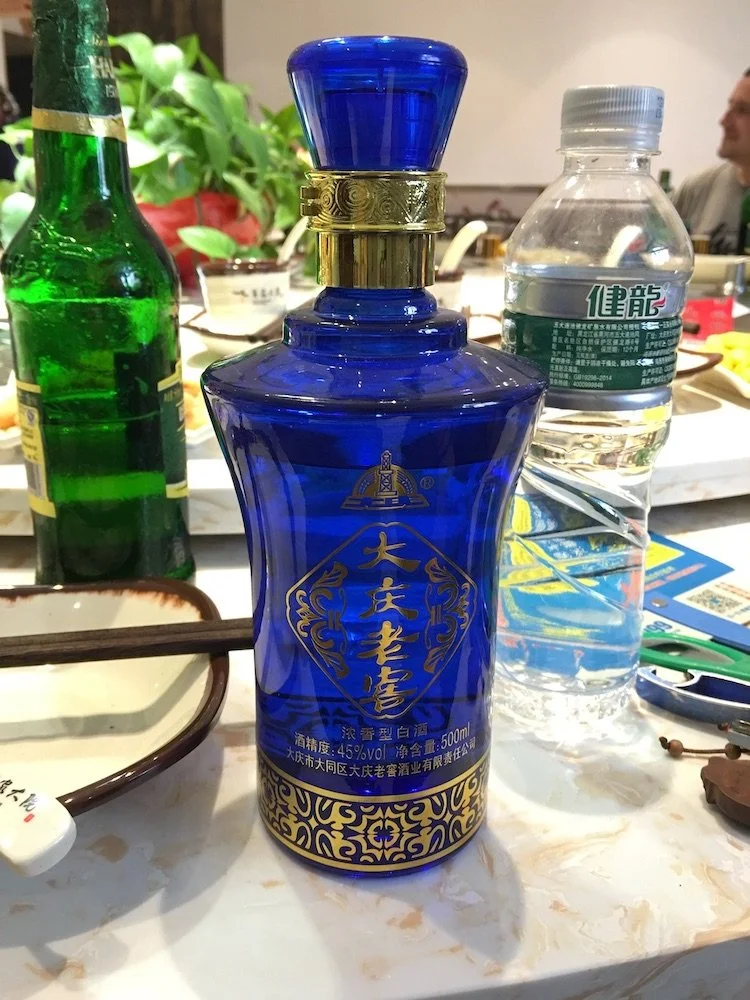Beerlandia: An Intro to Baijiu
I find the local alcohol in every country I visit to be fascinating. As that seemingly innocuous liquid hits your glass, you begin to tug at a thread that unravels a cultural undercurrent that may have otherwise remained hidden. Between the browsing of museums, visiting of temples, and Instagramming of food, one should always take a moment to pull up a barstool far away from the main tourist routes and have a dash of the local swill where the locals like to drink it. A country's national drink and the rituals around its consumption can be a great crash course on that country's overall character.
Baijiu is no exception. As China weathers an outbreak of a new strain of coronavirus, one can't help but open a bottle of the clear, volatile liquid for a bit of cheer during these grim times. It's also pretty handy as a disinfectant once the supermarkets run out. For now, let's drink to forget as we learn a bit about China's national drink, which is deceptively called "white wine".
It's not THAT white wine.
Let's get this straight early on. This "white wine" isn't your mom's chardonnay. Baijiu is a strong spirit that can range from 28% to as much as 65%. So, when your new Chinese friends and co-workers grin as they ask you if you want to try some Chinese white wine, operate as if you're about to take a shot of vodka, except worse. This white wine thing has fooled many a foreigner and it is pretty funny to watch, so take this post as your one and only warning, because I'm not going to tell you in person if I have the privilege to watch you throw down your first baijiu. That would spoil all the fun.
Preferred by peasants!
Baijiu is nearly a thousand years old, with proven origins dating as far back as the Yuan Dynasty. Depending on who you ask, the precursors of baijiu date wayyy back - as early as nine thousand years ago. As with most countries, the true origins of the national drink are hotly debated and you probably shouldn't get involved if you're not a local. I'm looking at you, Poland and Russia. In its early days, baijiu was mostly consumed by the peasantry while the royals preferred the more delicate huangjiu, or yellow wine. When the peasants give it the stamp of approval, you know it's going to be good. Or foul. Either way, it's going to be more fun than whatever the aristocracy are sipping, pinkies extended.
“When the peasants give it the stamp of approval, you know it's going to be good.”
The current iteration of baijiu probably came about around the time of the Ming Dynasty (1368-1644). It is always distilled from grain, sorghum being the most common. Rice is often used instead of sorghum in Southern China. Chances are, your first baijiu will be the sorghum variety. The scent is unmistakable. At first, it doesn't smell that bad. Floral, even. But once you've tasted it - and experienced the "baijiu burps" - it's not an aroma that's going to excite you in the future.
The aroma is the main characteristic that baijiu connoisseurs use for its classification. When something is judged primarily by its aroma and not its taste, it's time to be concerned. Here's what you can expect from the four main categories of aroma:
Strong: Distilled from a mixture of grains and has a more complex flavor profile. You'll find this on the shelves in Southwestern China.
Light: Distilled from sorghum, high in alcohol content, and has a sickly sweet floral aroma and taste. This is a common baijiu in Northern China.
Don't expect the attractive bottles to accurately reflect their contents.
Sauce: This category is locked up exclusively by the state-sponsored Kweichow Moutai brand. Generally very expensive with a soy sauce-esque aroma.
Rice: Distilled from rice with a sweeter, more mellow profile than the other styles; mostly limited to Southern China.
Now that you know a little bit about what to expect from baijiu, let's learn something arguably more important than the drink itself: how to drink it in a social setting.
How to drink baijiu
Pay attention, because the choreography of baijiu drinking may as well be a workshop on the core tenets of Chinese culture. Let's set the table - both literally and figuratively - for one of the more common scenarios you may encounter that involves baijiu. It's your first week in China, and your boss is hosting a dinner for all of the new employees. An important fact about drinking baijiu in China is that it will almost always be at dinner. Bar culture is a very new thing in China, and even my younger Chinese friends have commented that it's a little weird to just sit around drinking without food.
The first thing that you don't want to mess up is the seating arrangement. At these dinners, you'll usually be sitting at a large round table with a Lazy Susan (a glass thing you can spin to pass dishes around the table) at the center. At these round tables, the seat facing the entrance is reserved for the boss. The seats to the left and right of the seat of honor are for the second and third most important guests, respectively. If you are a new foreign employee, you may very well end up in one of those seats.
“Always clink the brim of your glass below the brim of someone more senior than you.”
The next thing you should know is that there is no stigma attached to drinking in excess at these banquettes. The boss will lead the toasting and unless you're allergic to alcohol, you will be expected to drink. To not do so would be seen as a lack of respect and you will lose face, being viewed as less of a man (women are not expected to drink as much, it is what it is) for not being able to keep up. I'm not condoning it, that's just how it is. It's not uncommon for multiple people to be falling over drunk after these events.
The boss/host generally leads the first three toasts. Once the host and the guests on his left and right side propose toasts, the field is open. If someone proposes a toast to you, it would be considered a big insult to not return the favor at some point. If you're going to propose a toast, make sure to fill your neighbor's glass to the brim - anything less would be stingy (don't worry, these are tiny shot glasses). Others will take the cue and fill their neighbors' glasses. Stand with your glass raised, make your toast, and:
1) If it's a smaller venue, clink glasses directly. Important: always clink the brim of your glass below the brim of someone more senior than you. When in doubt, always try to do this. It's a sign of giving respect. You will have many races to the floor while drinking in China.
2) If it's a very large venue, hold your glass out toward the person you are toasting and, when you are finished, tap the glass on the table before taking the shot.
Granted, this is quite a formal situation, but many of these aspects of Chinese drinking culture apply in more casual settings. Even with a friend, you will generally cheers before taking a shot or sip of anything. It's a little rude to just take a drink by yourself. People will generally always try to clink their glass lower than yours out of respect. You should at least make an effort to try to be lower than them - it will be recognized and appreciated even if you don't succeed.
The foreigner gets a free pass.
Well, there you have it - a crash course on baijiu. I promise nothing, other than you will never forget your first taste. The rituals around drinking it provide hints to Chinese culture as a whole - respect and face are extremely important. However, your Chinese hosts will not expect you to be familiar with all of these cultural niceties and will usually not take offense if you make a faux pas. On the other hand, they will likely be impressed if you make the effort! ◉
Note: I originally planned to follow this post up with a baijiu review, but I'm not sure when I'll be back in China due to the coronavirus situation. If I have to, I will track some baijiu down here in the States. I'm kind of curious to see what they have here!
Written by Seth Barham



